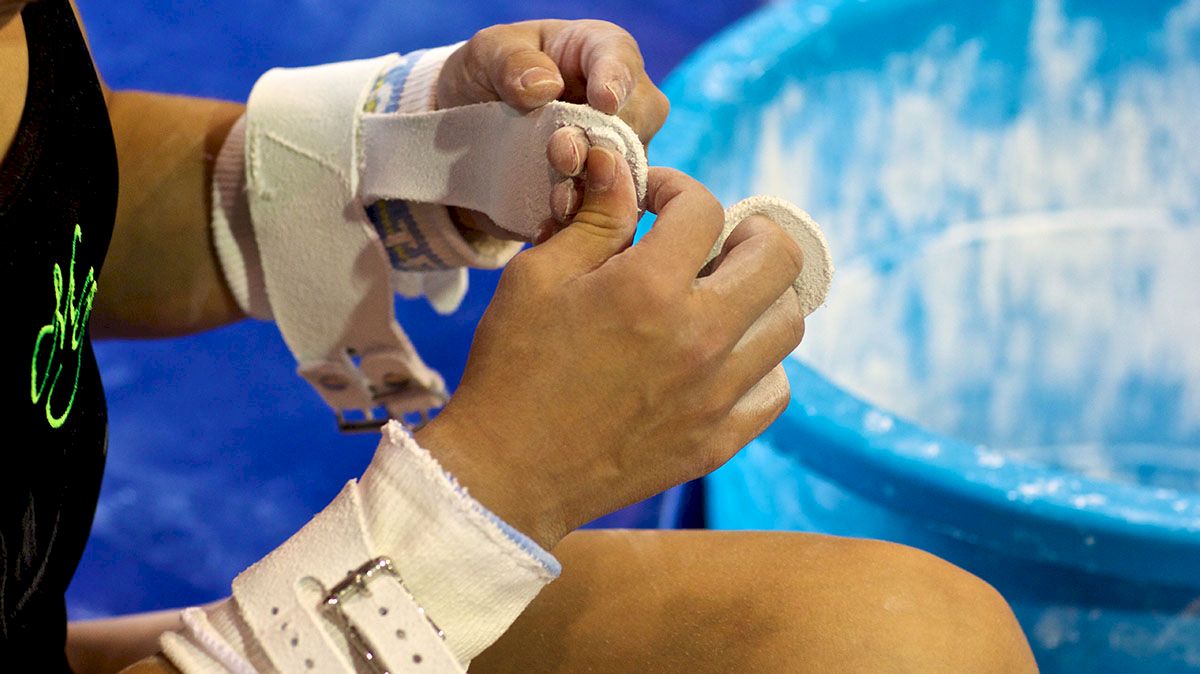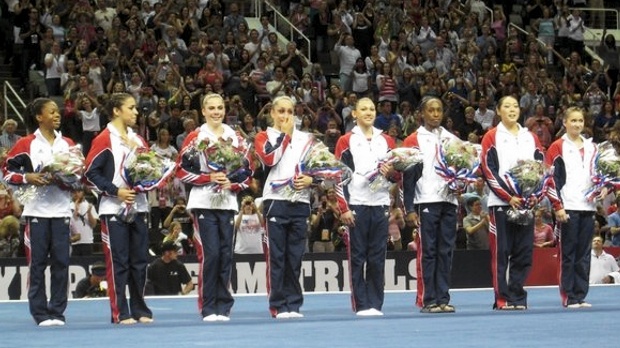In This Month: June
In This Month: June


The summer months are often some of the busiest of the year with a break from school and sports competitions all over the world. This is especially true for gymnastics as these are often the months leading up to the Olympics and World Championships. In the "In This Month" series, key events in gymnastics history that once occurred in the current month will be highlighted and ranked in order of importance.
1. English Publication of the FIG Code of Points
In June of 1968, the United States Gymnastics Federation published the FIG Code of Points (for men and women) in English. This was the first time the Code was available in English. By doing so, the USGF made the Code accessible and understandable to those in the U.S.
This was a major step for the future of USA Gymnastics and their success in the sport as it evidently helped gymnasts and coaches compose routines to be able to compete internationally and at the elite level.
2. First USGF Nationals
The United States Gymnastics Federation held its first national championship competition in Burr Ridge, Ill. at Maine East High School on June 14 and 15 of 1963. There, the USGF crowned its first all-around champions, former Southern Illinois gymnast Donna Schaenzer and former California gymnast Arthur Shurlock.
3. First Individual European Artistic Gymnastics Championships
The 2005 European Championships were held on June 2 to June 5 in Debrecen, Hungary. These were the first European Artistic Gymnastics Championships that consisted on only individual competition, including all-around and events. Since then, the European Championships of odd-numbered years have been individual ones and had no team competition.
At these Championships, Marine Debauve won the women's all-around title over Anna Pavlova, making her the first French female gymnast to win a major international all-around title.
4. 2012 U.S. Olympic Trials
From June 28 to July 1, the men and women of the U.S. National Team competed for a chance to represent their country at the London Olympics. At the HP Pavilion in San Jose, Cal., the Fierce Five were officially announced as the women's U.S. gymnastics team while Jake Dalton, Jonathan Horton, Danell Leyva, Sam Mikulak, and John Orozco were named to the men's team.
This was the most important competition (before the Olympics) for the gold-medal-winning Fierce Five as they proved they deserved a spot on Team USA. Reigning Olympic all-around champion Gabby Douglas also had a great competition during Trials as she finally won first place in the all-around ahead of then-reigning World Champion Jordyn Wieber. This was Douglas's first official all-around win in an elite competition before becoming all-around champion.
These Trials resulted in only six Olympic medals for USA Gymnastics but includes two of the most coveted Olympic gold medals, the women's team and individual all-around gold.
5. 2004 U.S. Olympic Trials
From 24 to June 27, The Arrowhead Pond in Anaheim, Calif. was full of gymnasts vying for their ticket to Athens, the home of the Olympic Games. Jason Gatson, Morgan Hamm, Paul Hamm, Brett McClure, Blaine Wilson, and Guard Young were named to the men's team while Mohini Bhardwaj, Annia Hatch, Terin Humphrey, Courtney Kupets, Courtney McCool, and Carly Patterson were named to the women's team.
Both teams ended up winning team silver at the Games, where a total of nine medals went to USA Gymnastics, including both the men's and women's all-around golds, won by Paul Hamm and Carly Patterson.
6. 2008 U.S. Olympic Trials
These Olympic Trials named two all-around medalists, a silver-medal-winning team, a bronze-medal-winning team and three event medalists. After competing in Philadelphia, Pa., Shawn Johnson, Nastia Liukin, Chellsie Memmel, Samantha Peszek, Alicia Sacramone, and Bridget Sloan were named to the women's team that went on to win the team silver in Beijing. The men's team consisted of Alexander Artemev, Raj Bhavsar, Joseph Hagerty, Jonathan Horton, Justin Spring, and Kai Wen Tan. The men went on to win the team bronze in Beijing.
These Trials resulted in 10 Olympic medals for USA Gymnastics, most notably Liukin's gold in the all-around and Johnson's gold on beam.
7. 1996 U.S. Olympic Trials
Similar to the 2012 U.S. Trials, the Trials of 1996 named the women's gymnastics team who would go on to the Atlanta Olympics and win the first team gold for the Unites States. Amanda Borden, Amy Chow, Dominique Dawes, Dominique Moceanu, Shannon Miller, Jaycie Phelps, and Kerri Strug were named to the team that became known as the Magnificent Seven.
These trials began on June 25 and ended on the June 30. They resulted in five medals for USA Gymnastics including two golds, the women's team and balance beam (won by Shannon Miller).
8. 1st Artistic Gymnastics Meeting Brazil
In 2011, from June 23 to June 26, the Brazilian Gymnastics Confederation held its first Artistic Gymnastics Meeting, an FIG calendar event. Gymnasts from Brazil, France, Spain, Mexico and Austria participated in the inaugural event. Brazilian gymnasts swept every women's competition. Noteworthy competitors include Brazil's Diego Hypolito and Arthur Zaneti.